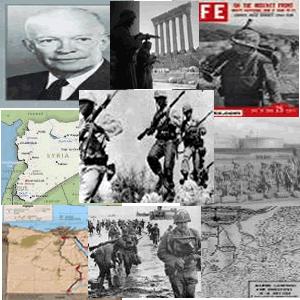
 |
Lebanon |
| HOME |
 |

In 1958, President Eisenhower at the request of Lebanese President Chamoun sent in troops to Lebanon to help stop political unrest that was taking place in his country. The reason for Chamoun’s fear revolved around the growing Islamic population that was the solid majority in the country. During this time, Egypt and Syria formed an alliance called the United Arab Republic. The alliance was aimed not only as a way to gain greater support for a pan-Arab state, but also to combat non-Islamic political forces in Syria, namely Communists. The Syria aimed to use this alliance to gain greater access to the Egyptian market. The Lebanese president believed that his country was the next nation to join this alliance with or without his approval. He also believed that the mostly Muslim Lebanese military would be more loyal to the proposed Islamic super state rather than to him. Realizing this, he went to the Unites States for help. Also, Syria at the time was in internal conflict between Christian and Muslim populations. Lebanon had a similar demographic make-up. So it is only natural that Lebanese officials were worried over the current events taking place in the region. Eisenhower’s previous national and international security policies have made refusal of the Lebanese request virtually impossible. The conflict within Lebanon intensified with the US arrival, and even though many international communities could see the violence occurring in Lebanon; they did little to help eliminate it. Eventually, Syria became a defacto overseer of Lebanon and pushed it towards an Islamic state. |
|
|